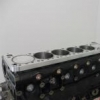Arp Main Studs... At What Point Should They Be Needed?
Announcements
-
Similar Content
-
Latest Posts
-
By joshuaho96 · Posted
If you can get heat to it somehow that and penetrating oil will do wonders. Induction bolt heater, whatever it is. -
By joshuaho96 · Posted
I frequently tell people interested in buying a GTR to either pick a 996 Turbo or E92 335i 6MT. Either one is close enough to being what you wanted from a GTR while being much, much cheaper. I just have brain damage and had to have one anyways. -
By joshuaho96 · Posted
I really hope those injectors work for you. I have recently heard from another person with an RB20DET about how they cannot get their car to idle at all and they are tearing their hair out. I never really knew what the issue was but to me it had to be either the ECU or fuel injector. Suddenly on the wideband after sitting in closed loop idle for a bit it would lean out and stall. -
they never use to charge extra for mods. just rembering when i had my V35 i had heaps of mods and i don't rember them charging extra. You just had to list them incase you had an accident and needed them replaced. They have been bought out a few years ago i think by a new greedy company.
-
Soak that one in Penetrene. Leave, repeat, etc. Then heat.
-







Recommended Posts
Create an account or sign in to comment
You need to be a member in order to leave a comment
Create an account
Sign up for a new account in our community. It's easy!
Register a new accountSign in
Already have an account? Sign in here.
Sign In Now